ON THE MEADOW, WITH BEETLES AND MUSHROOMS
Today I spent the morning in the meadow, busy searching for mushrooms, insects, and other little natural wonders that can be found there.
It was a very successful morning, I'm extremely satisfied with what I found, and this is my contribution to FungiFriday by @ewkaw
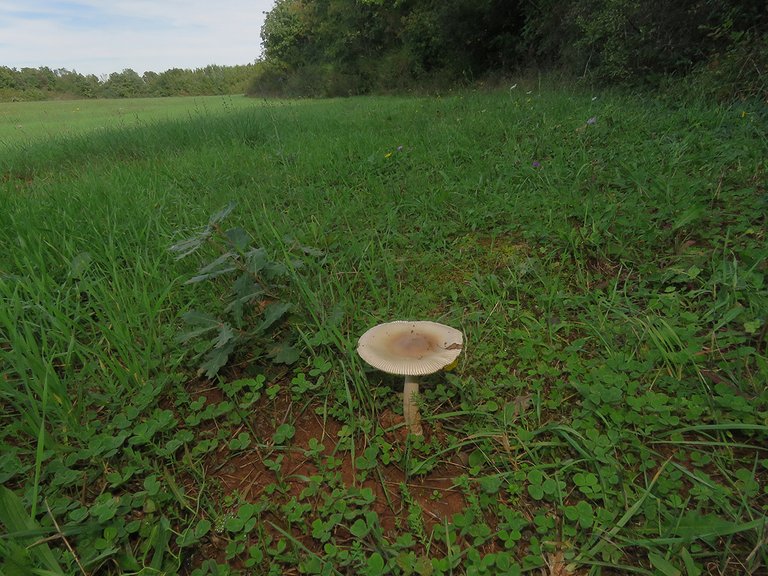
Here you can see the most important mushroom I encountered today, the one that made this post longer and more complex than I expected it to be when I left the house directed to the area around the village of Shishan, five or six kilometers from where I live. If you enlarge the following photograph by clicking it ...
... you'll notice a small insect on the milky-white gills of the Amanita vaginata mushroom.
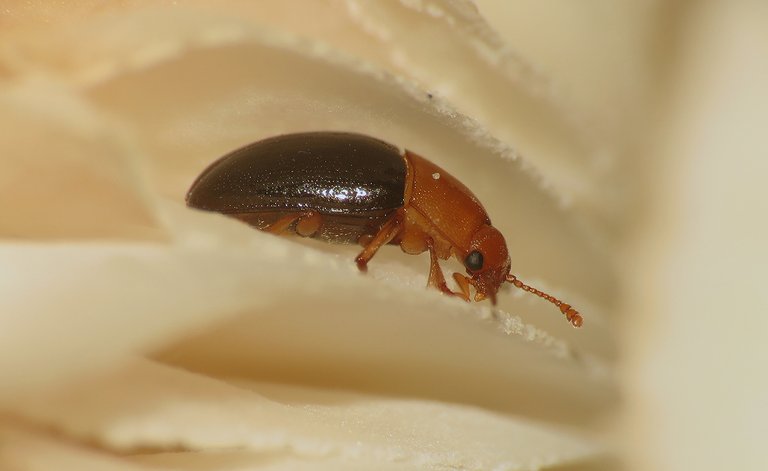
This is the Triplax lepida, a species from the Erotylidae family.
I encountered this species for the first time a little less than a month ago when it appeared in another post about the mushrooms and insects in the meadow. I saw only one beetle back then, and I was able to take only a couple of photographs before the Triplax lepida walked down the mushroom's stalk and disappeared into the intricate vegetation. This time ...
... I had plenty of beetles at my disposal and I could observe them for hours.
Watching the life of these beetles in the hidden world on the underside of the mushroom's cap was definitively exciting, but it wasn't easy.
I had to lie down on the humid vegetation and patiently spend plenty of time in an uncomfortable pose while trying to manage my camera in the narrow space between the mushroom's cap and the ground.
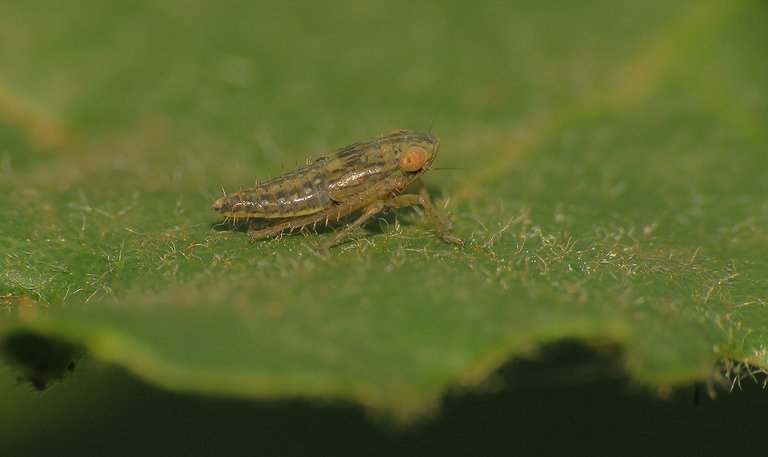
Meanwhile, on the elongated leaf of some herbaceous plant under the mushroom ...
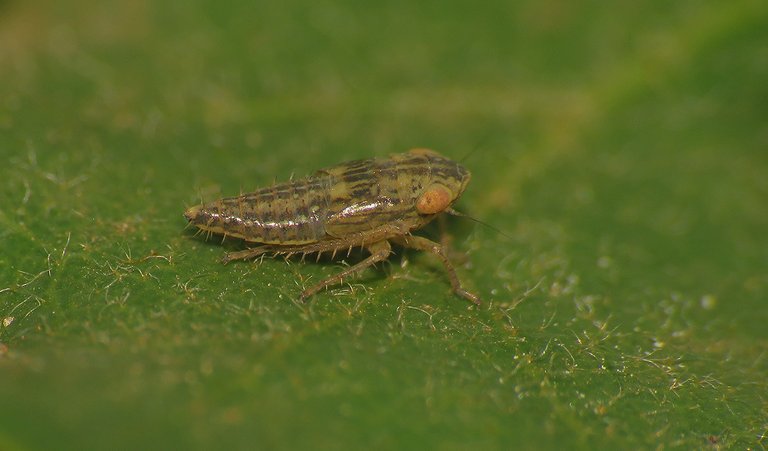
... a leafhopper was quietly resting, enjoying the day in a very comfortable pose under the big parasol provided by the Amanita vaginata. When it comes to this young nymph, I can't tell you the name of the species but the family is definitively Cicadellidae, that's for sure. A bit further, 20 - 30 centimeters or so from the fairly big Amanita vaginata ...
... I noticed a very small, gracile mushroom that I never saw before. This combination of shape, size and vivid yellow was completely new to me. Later, at home, after a quick internet search, I found out that this is the Mycena acicula. First, I took a photograph with the flash of the camera on. In the low light down on the ground, it was easier that way. But I liked the way this scene looked in the subdued ambient light more ...
... so I took another shot with longer exposure and no additional, artificial light involved. The difference between the two photographs isn't great or crucial, but in photography, small things can make or break the atmosphere.
Erotylidae, commonly known as pleasing fungus beetles, are most diverse, numerous, and colorful in tropical regions, but about a dozen species can be found in Europe as well.
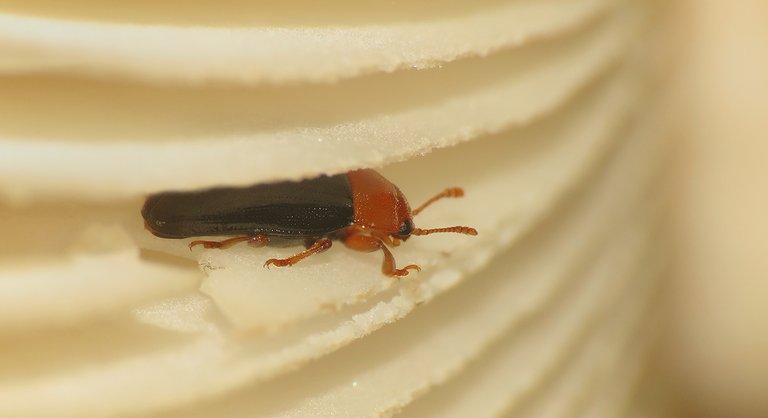
While meandering through the Internet in search of information that could help me shape the text of the post, I haven't found anything specific about the species shown in these photographs, the Triplax lepida.
All I could find was about the family in general. One source stated that "Erotylidae feed on plant and fungal matter. Some are important pollinators" (https://en.wikipedia.org/wiki/Erotylidae)
In another source, I came across something better and more detailed. It stated that " pleasing fungus beetles feed on the fruiting bodies of fungi. A wide variety of fungi serves as hosts for the family as a whole, but each pleasing fungus beetle species seems to be specific to a certain group of fungi." (https://entnemdept.ufl.edu/creatures/misc/beetles/pleasing_fungus_beetles.htm)
In this second source, I found another important piece of information that helped me understand the presence of beetles on the Amanita vaginata.
I read that members of the genus Pseudischyrus and Triplax feed on fungi that have mycorrhizal associations with living tree roots. These mushrooms include Amanitas and Russulas. Both kinds of mushrooms were present today in the meadow. I already showed you an Amanita, and now, I mean, in the following photograph ...
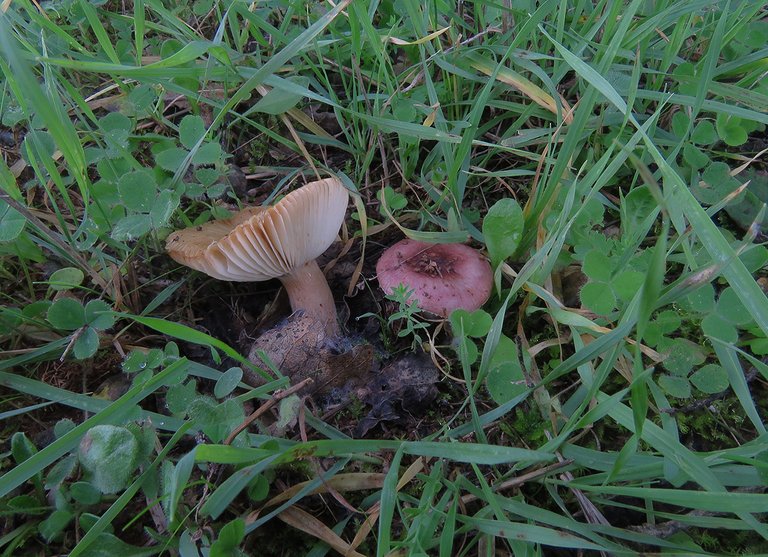
... is time to take a look at the Russulas.
These are Russula vesca mushrooms. As you can see here, the color of the cap can carry considerably in this species. The Russulas were photographed about 50 - 60 meters from the Amanita vaginata.
In the first ten or fifteen minutes, when I just arrived, I was rambling aimlessly across the meadow in search of something that could catch my attention and ignite inspiration. From the moment I found the beetle-infested Amanita ...
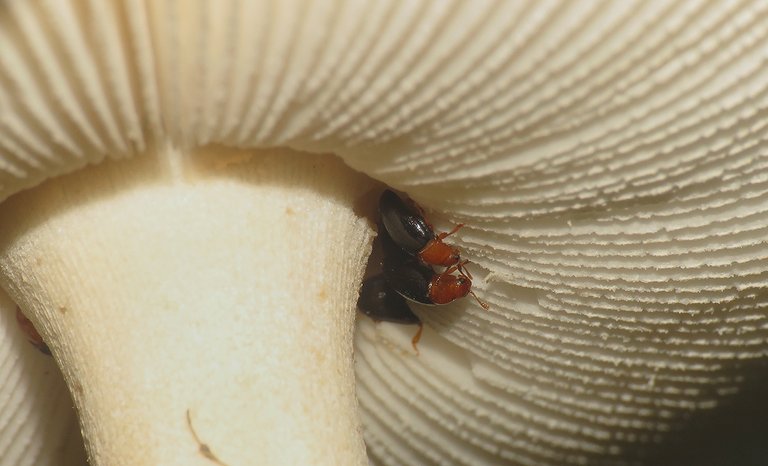
... I started behaving in a predictable pattern. After spending half an hour or so lying on the ground, focused on the beetles ...
... it was time to stand up and take a walk around that corner of the large meadow to stretch the legs and if possible, find something that could add more diversity to the story.
When it comes to the beetles, besides taking plenty of photographs, I also recorded a bit of footage that ended up forming the following video. I wish you a good viewing experience.
More often than not, my videos are just fragments of larger, photography-oriented posts on HIVE. In this case, the video is definitively more than a fragment, but is also a part of the more complex story in which you can see and read more about the mushroom and beetles showed here, and also about some species that you can't see in the video. The main protagonists of this video (and the entire post, really) are the Triplax lepida beetles from the Erotylidae family and the Amanita vaginata mushroom.
Most Erotylidae, commonly known as pleasing fungus beetles, feed on fruiting bodies of various kinds of fungi. Here you can take a look at the everyday activities of one of the species from that family.
The video part of the video is my work, of course, but for the audio, I used some lovely free-to-use stuff found on Pixabay.
Music by Lexin_Music from Pixabay
▶️ 3Speak
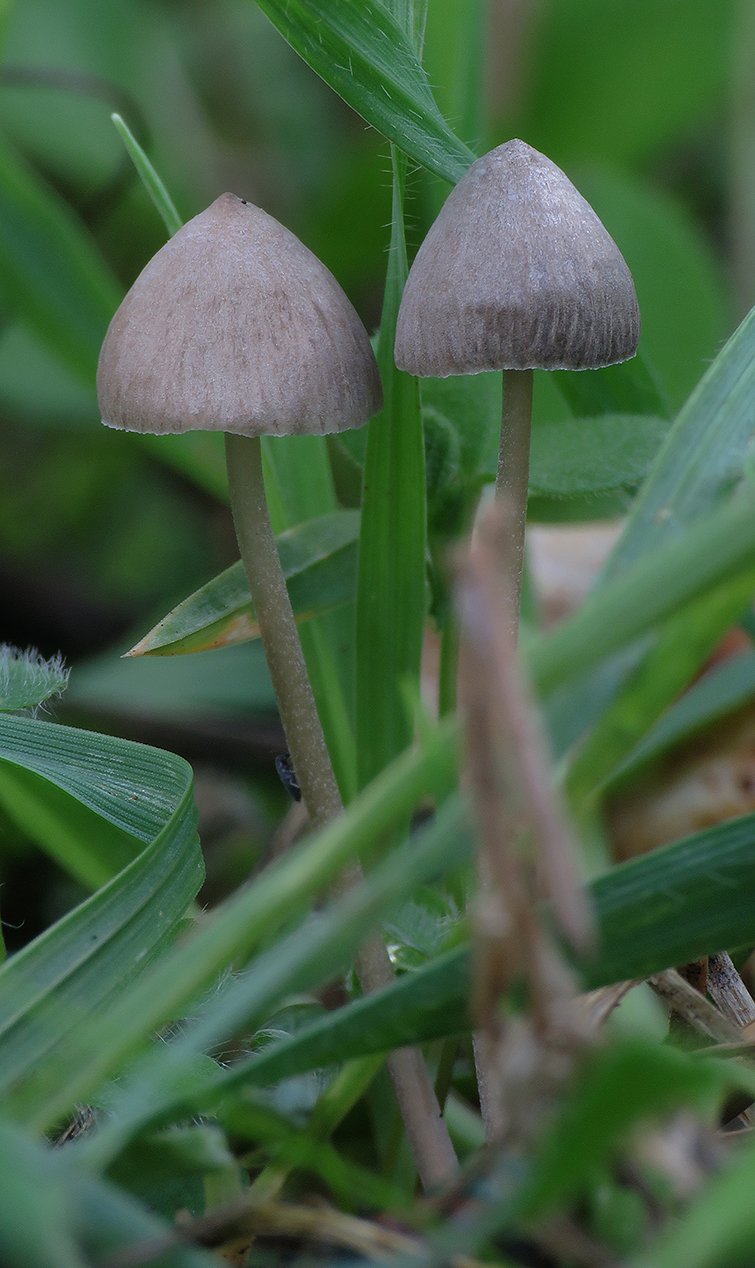
This pair of mushrooms was photographed only ten or twelve meters from the Amanita vaginata, the epicenter of my today's shooting experience. After taking a look at the freshly taken photograph on the screen of the camera, I noticed that the stalks are partially hidden by the blurred vegetation in the foreground. The picture doesn't look bad because of that, but I felt the obsessive-compulsive urge to put the grass out of the foreground and reshoot the scene.
In this enlargeable photograph, you can see the Panaeolus papilionaceus mushrooms in all their glory. Both, the caps and the stalks are clearly visible here.
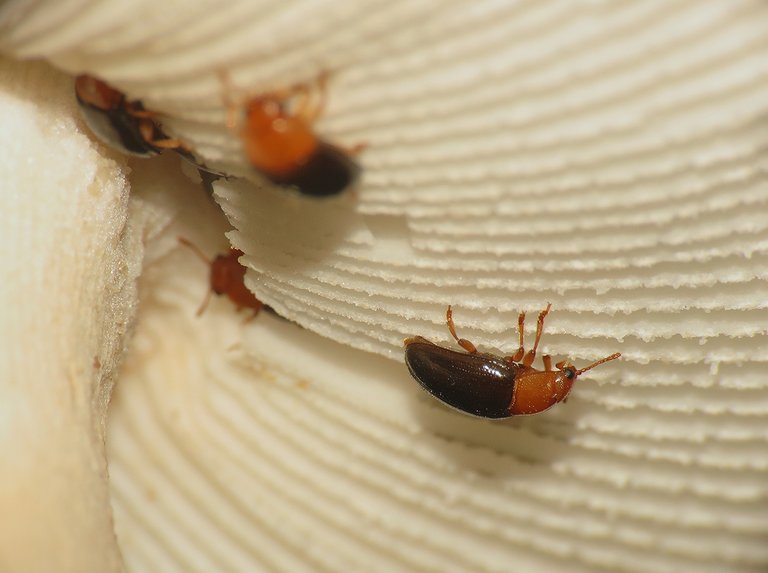
At one point, while observing the fungus beetles ...
... two of them started mating. The pair soon walked to the area hidden by the stalk so I wasn't able to take more than one photograph of that scene.
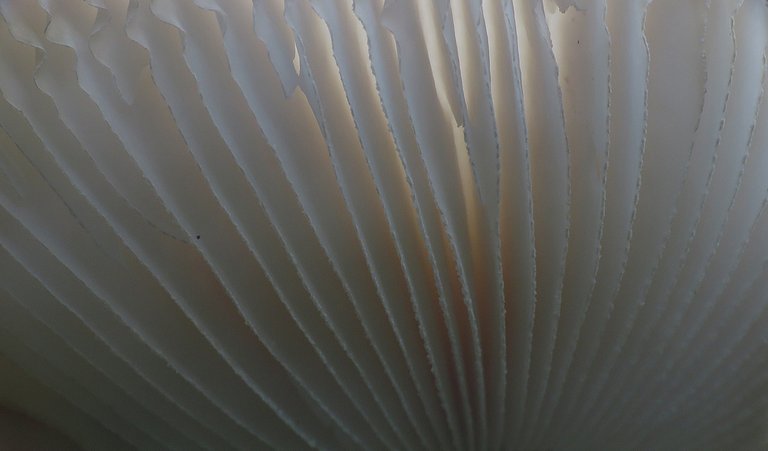
Here you can see the elegant gills in a moment when all the beetles were on the opposite side of the cap or hidden in the fissure where the cap meets the stalk.
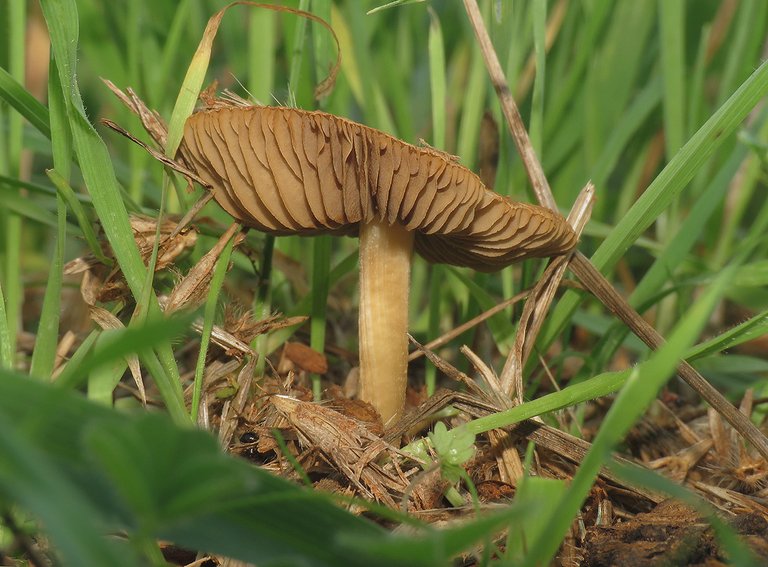
Here you can see another mushroom that I found in that area, not far from the Amanita.
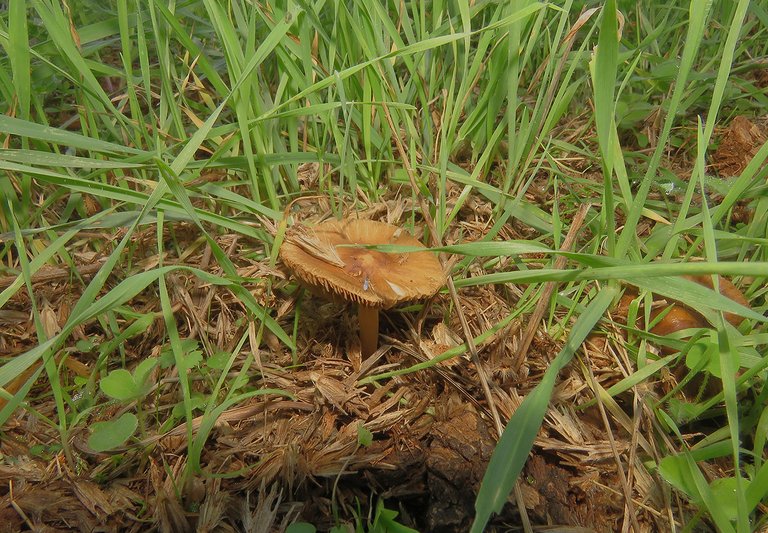
This is the Agrocybe pediades.
A meter or two further, I photographed two more mushrooms of the same kind. The following photograph ...
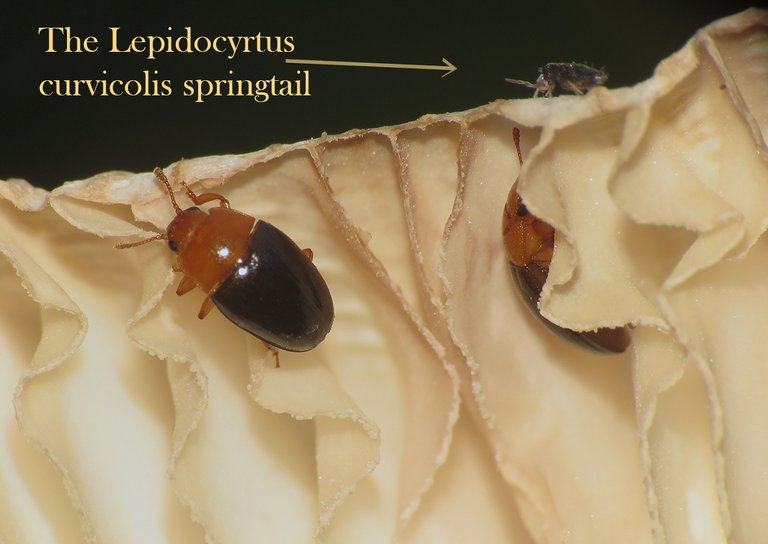
... isn't a very good one. The beetle positioned in a place that makes it the main protagonist of the shot is blurred. The one barely visible behind the gill is sharp but the focus of the observer gets inevitably shifted toward the uncomfortably blurred one. You can see quite a few wrongs in this shot, but I included it nonetheless because you can see another interesting creature here. A springtail. The Lepidocyrtus curvicollis was roaming the top of the cap while the beetles were busy feeding on and in between the gills underneath.
In most of the photographs shown in this post, you can see beetles crawling across the gills, but ...
... but most of the time the Triplax lepida were completely or partially hidden by the gills.
I kept moving like a snake, worm, or lizard while lying under the mushroom in search of the best angle to catch the beetles hidden in the structure of the mushroom's underside.

The same insects can give a surprisingly different feel to the photograph depending on the environment in which are photographed.
There is something magical about these colorful beetles in the world made of beautiful white curtains.
Here you can see another Russula vesca. This one was photographed on the edge of the meadow, very near the line of shrubs and trees. After some more walking, mostly in circles around the same area ...
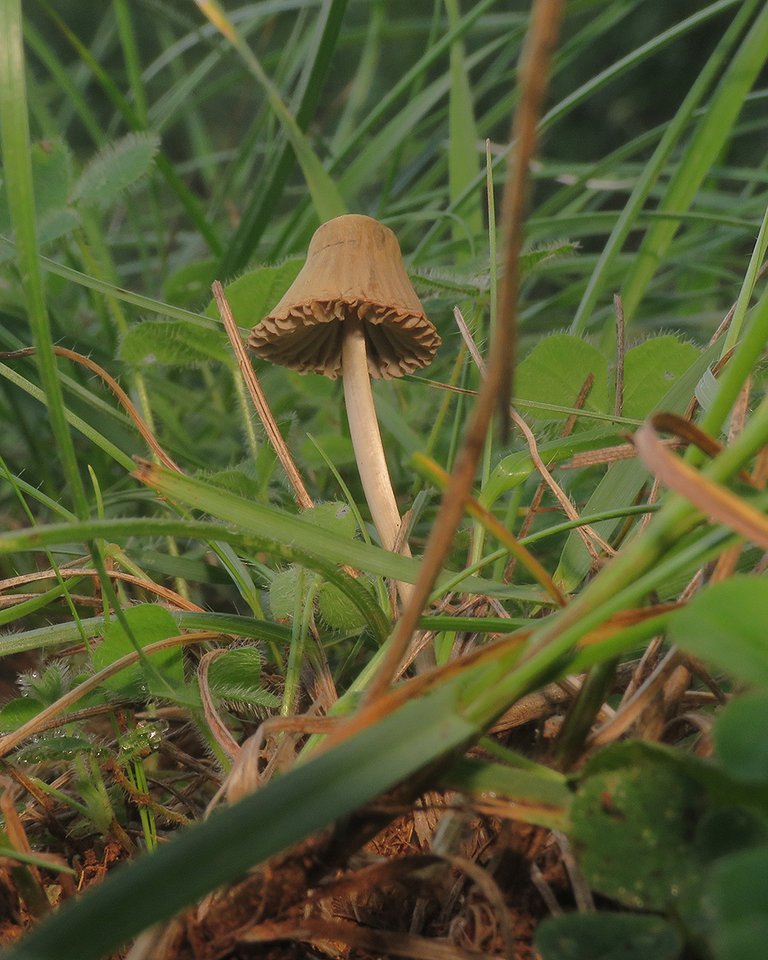
... I came across a Conocybe tenera mushroom ...
... surrounded by grass and clover.
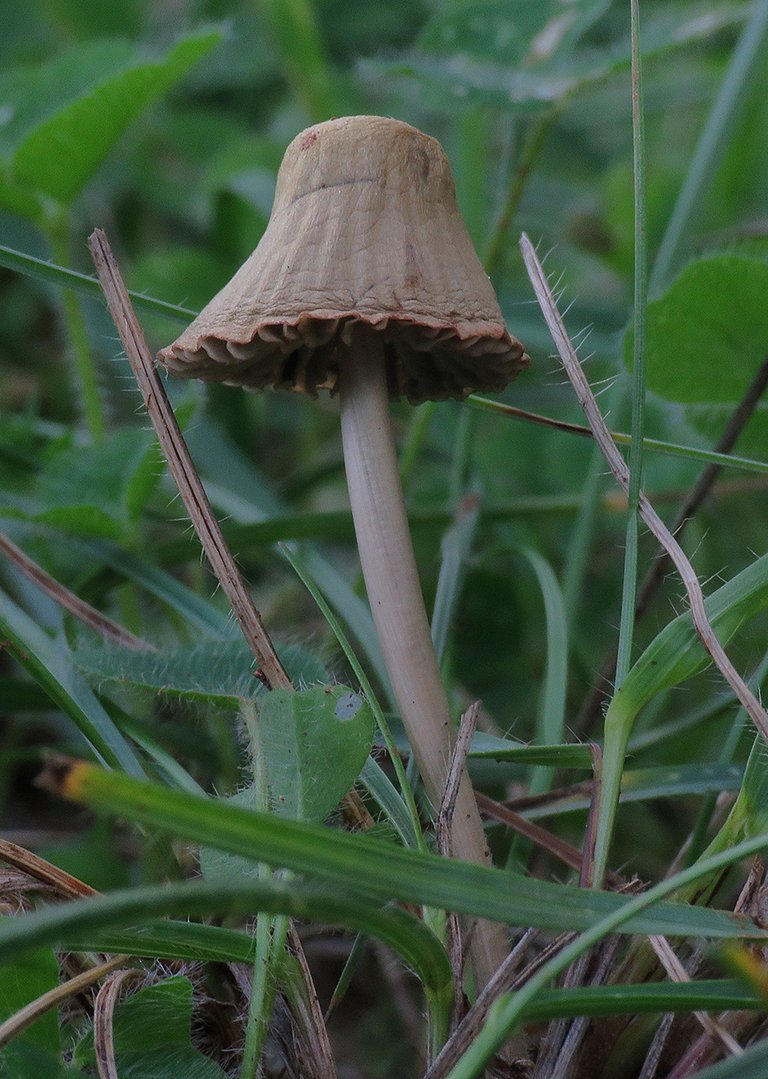
This fruiting body is relatively old, and the cap is dry and shrunken, so the mushroom looks considerably different than when is in its prime. It looks like a good design for a fashionable hat. Not far from there ...
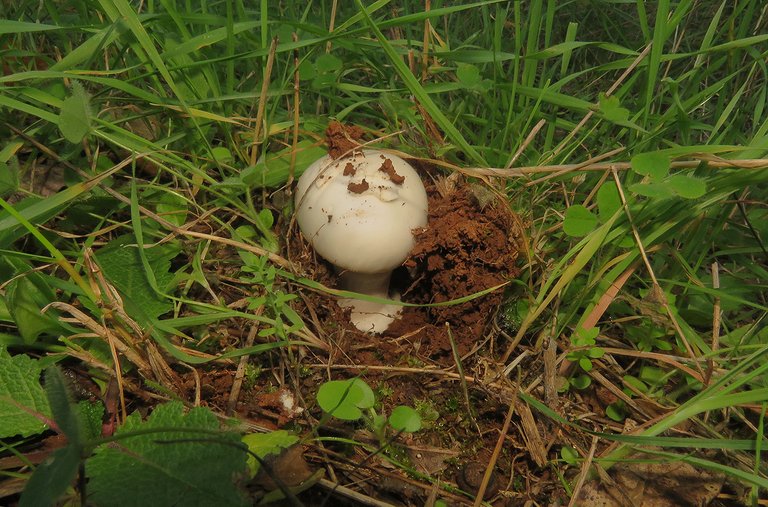
... a fresh new Agaricus campestris has recently come out of the ground. The cap is still closed and rounded.
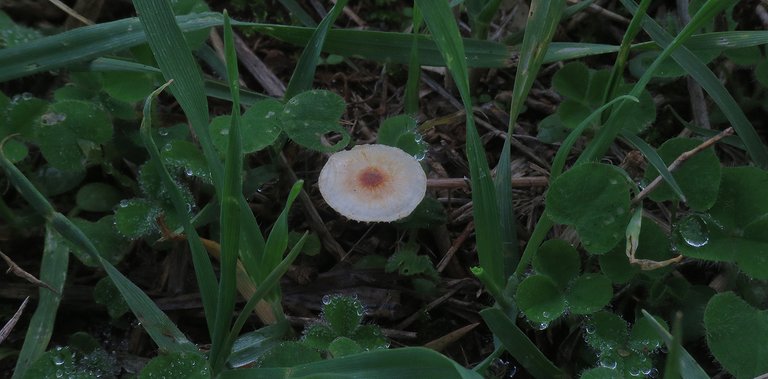
Five or six meters further, I stopped to photograph this small mushroom that I wasn't able to identify.
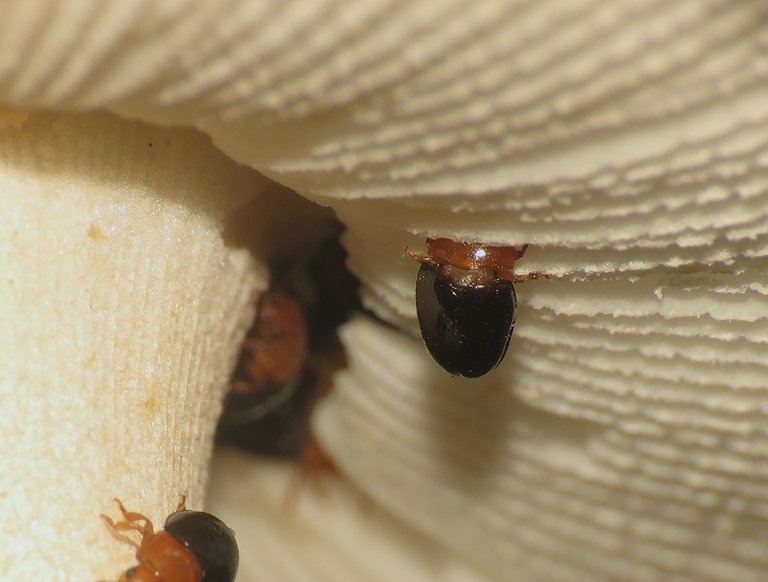
Here, the focus is on the fungus beetles again. You can take one more look at them before the end ...
... because the post ends right here and now.
Two of the written sources used quite literally in the post are already cited in the text. The following links will take you to some other sites with more information about the protagonists of this post. I found some stuff about them there.
https://en.wikipedia.org/wiki/Russula_vesca
https://en.wikipedia.org/wiki/Amanita_vaginata
https://en.wikipedia.org/wiki/Panaeolus_papilionaceus
https://en.wikipedia.org/wiki/Agaricus_campestris
https://commons.wikimedia.org/wiki/Category:Triplax_lepida
https://en.wikipedia.org/wiki/Erotylidae
AND THAT'S IT. AS ALWAYS IN THESE POSTS ON HIVE, THE PHOTOGRAPHS AND THE VIDEO ARE MY WORK - THE END.

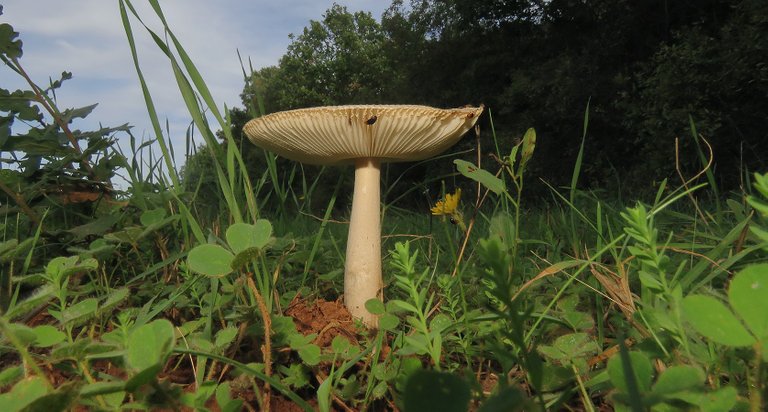
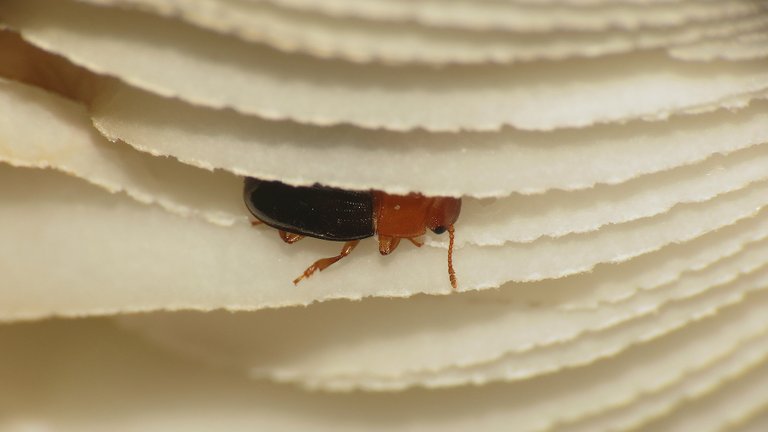


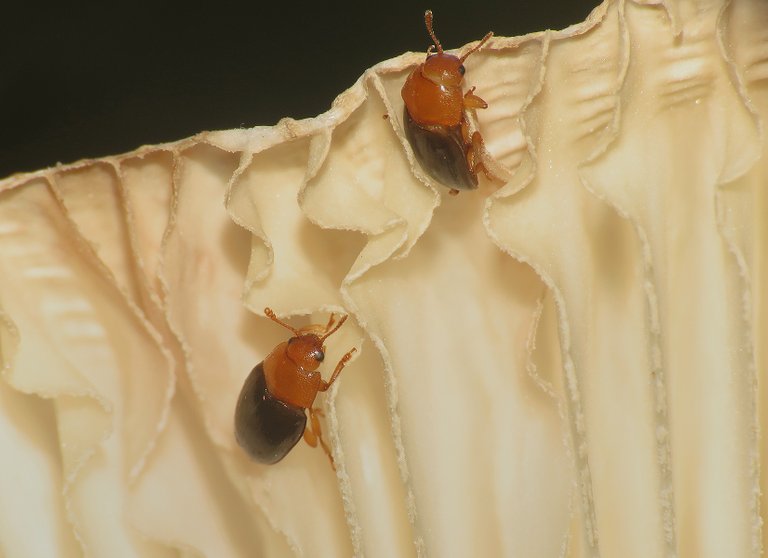
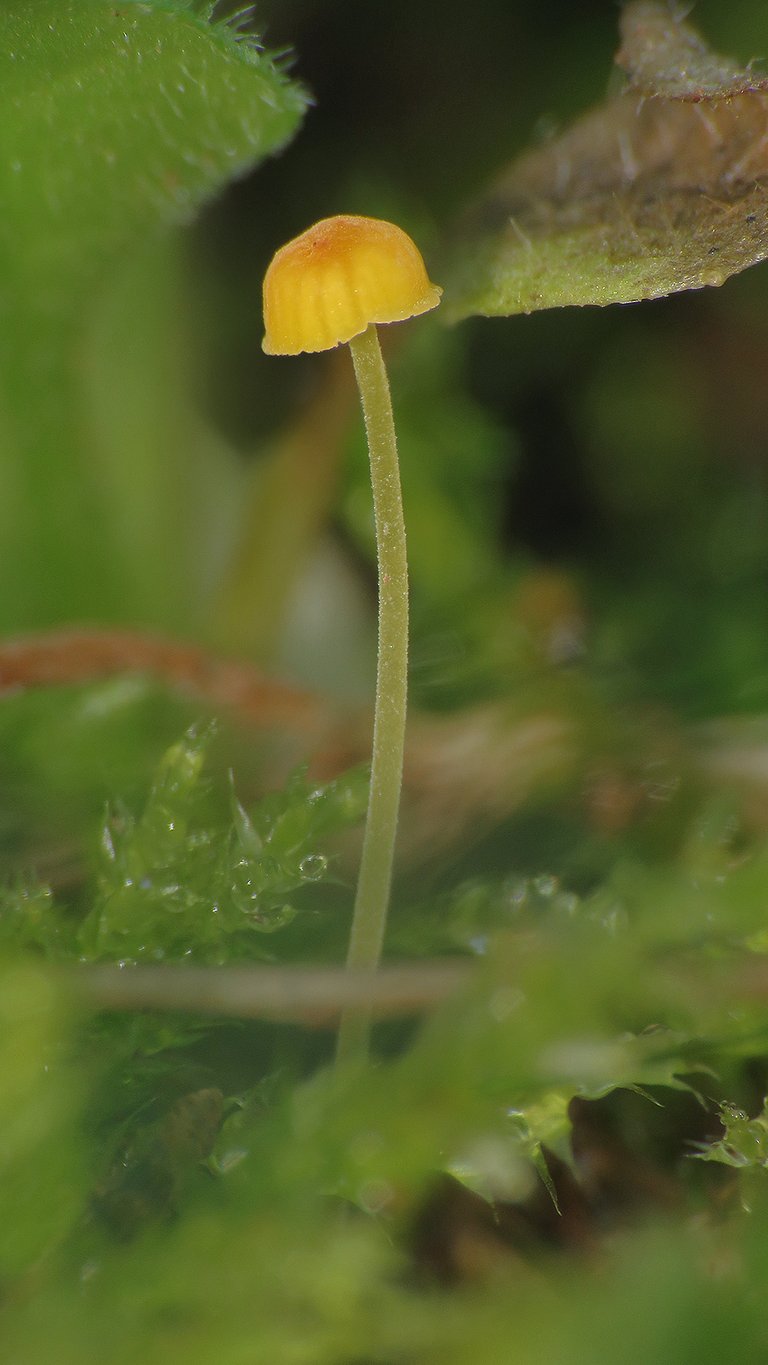
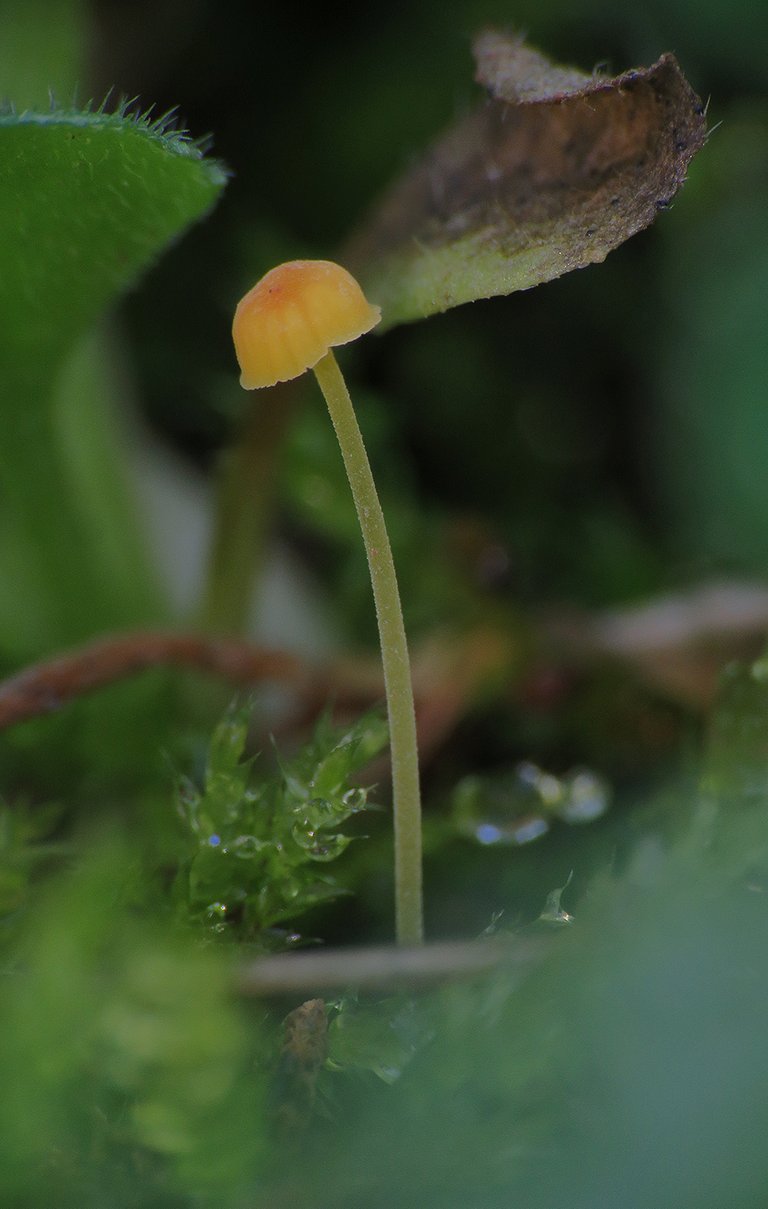
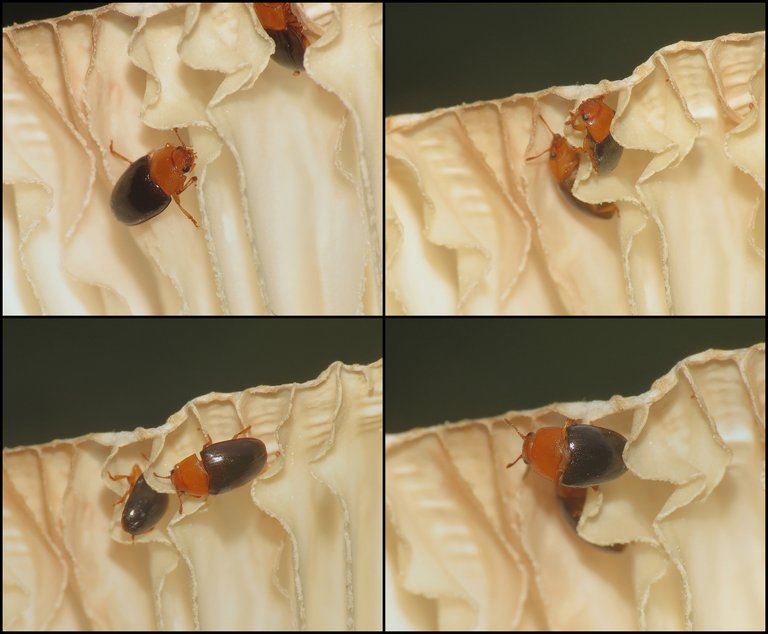
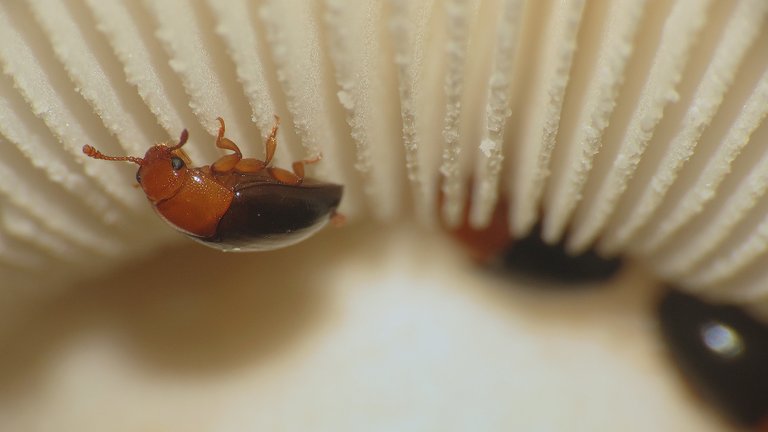
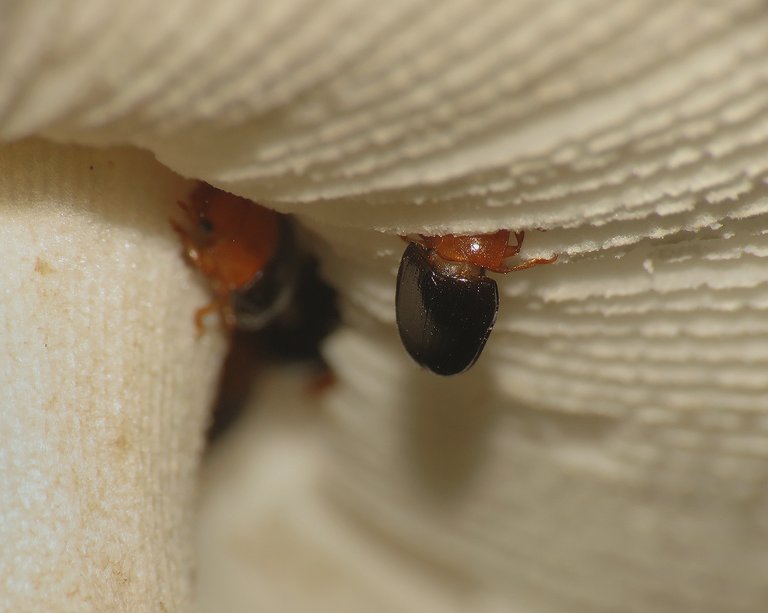
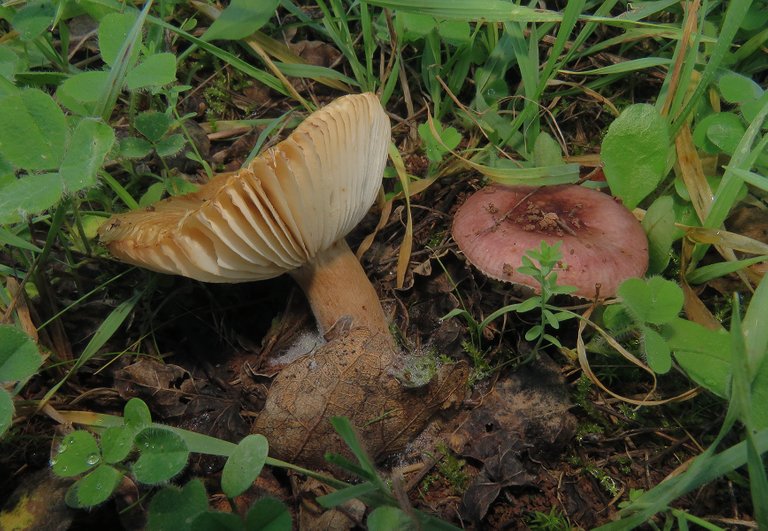
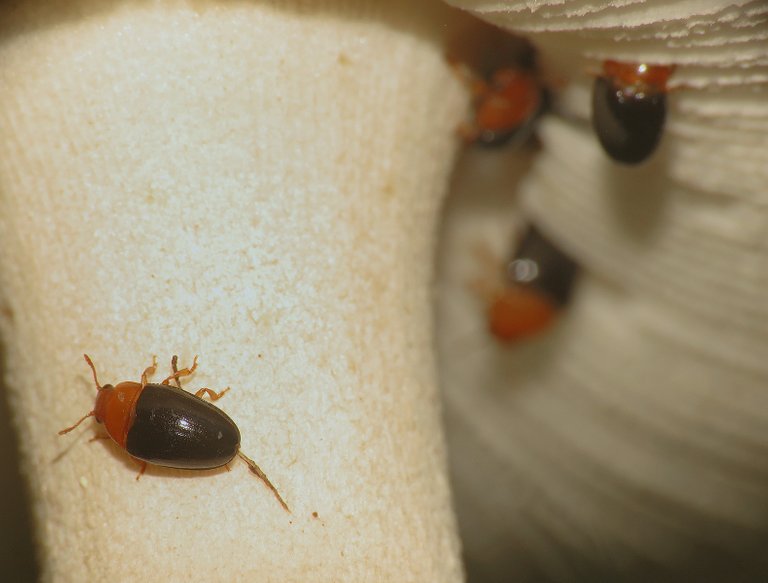

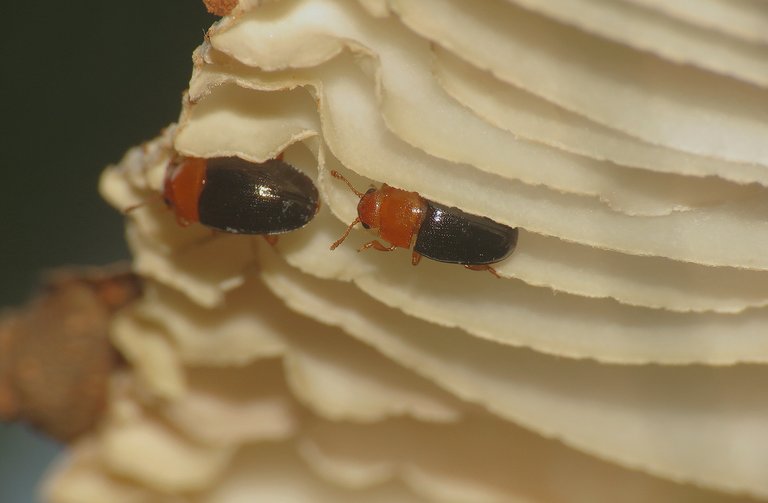
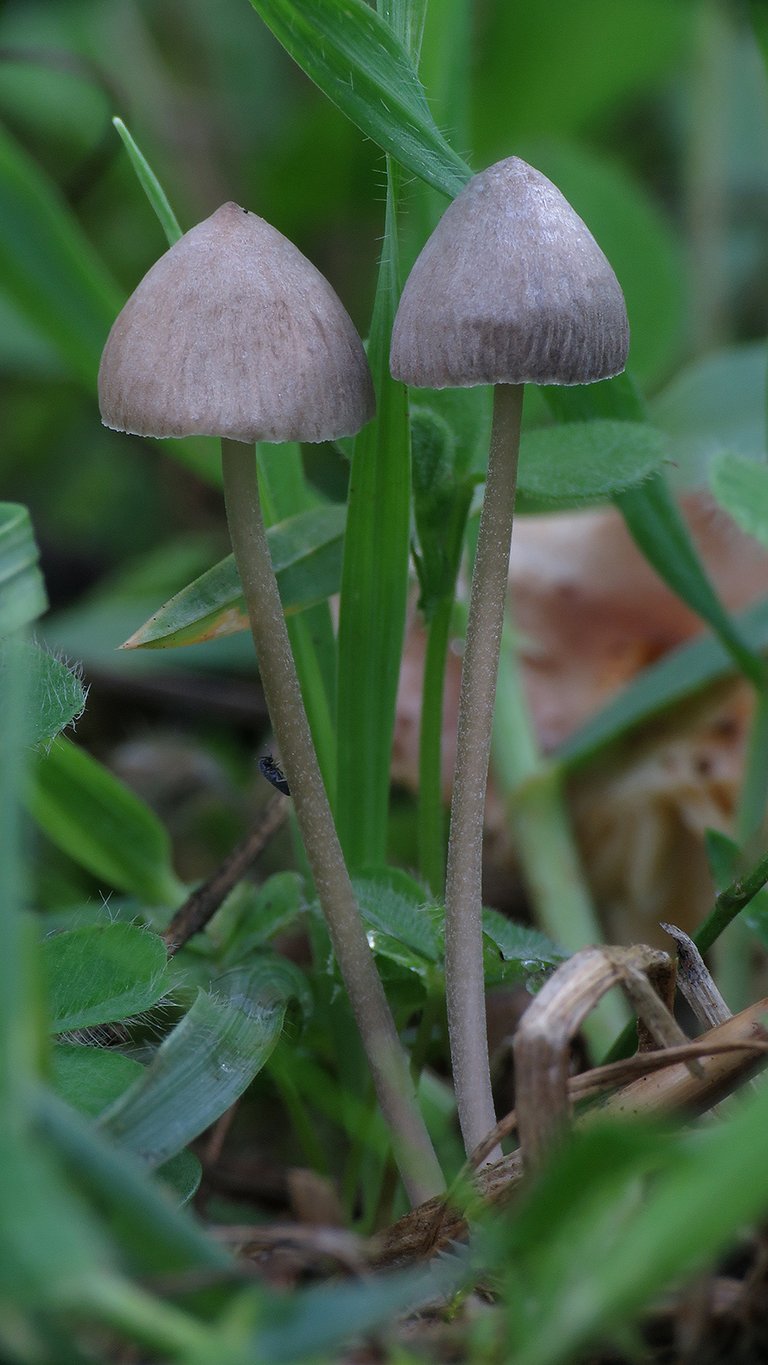


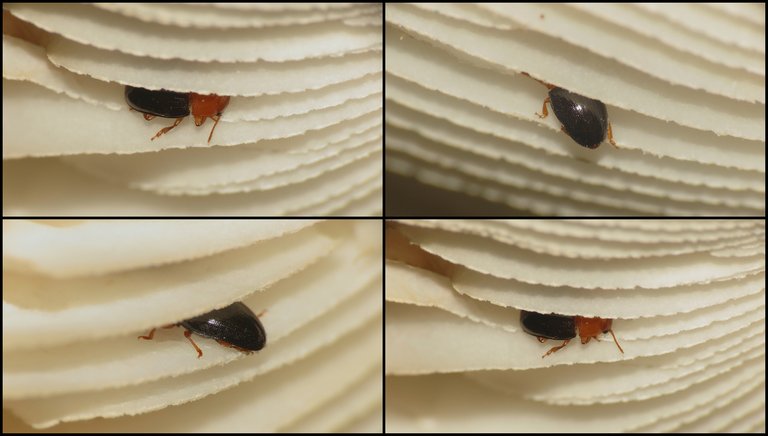
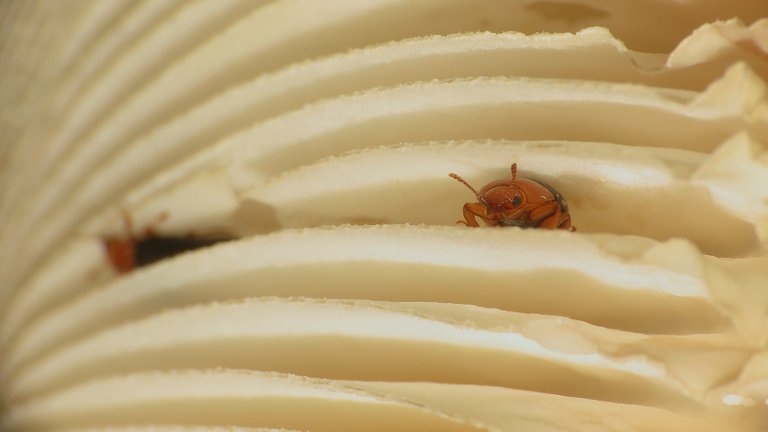
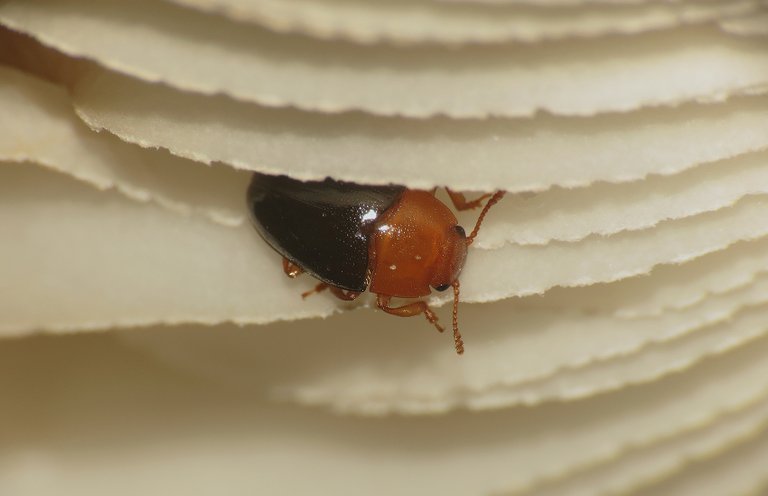
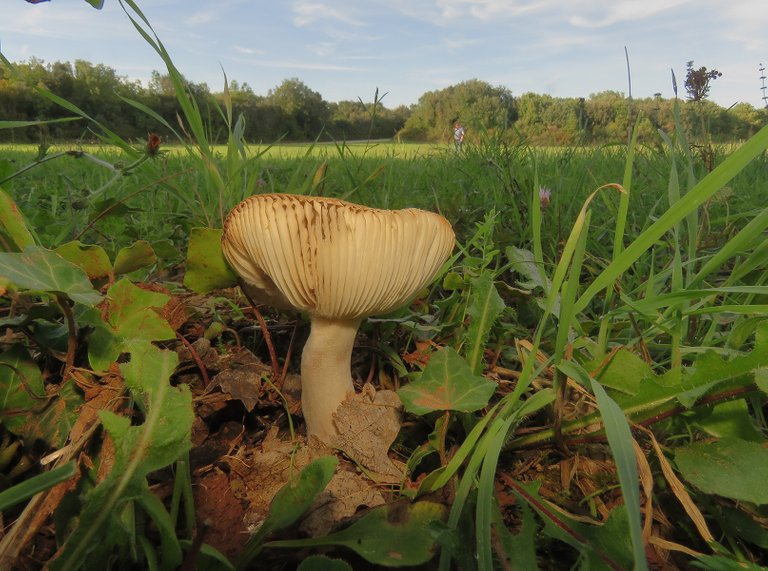
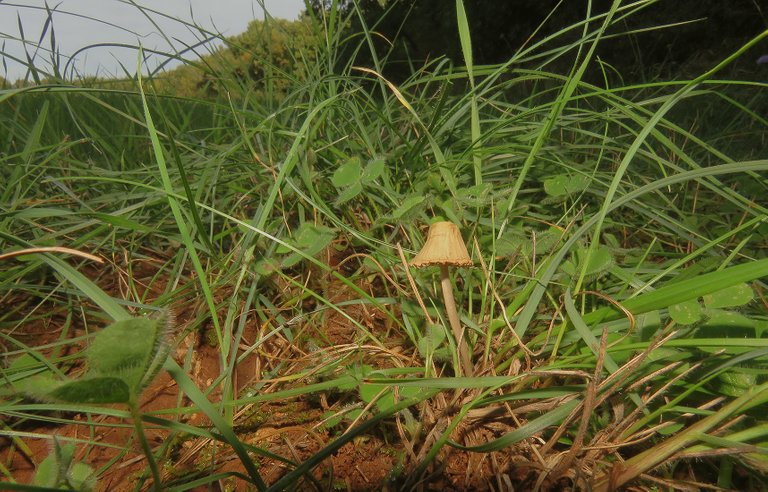

It's good to hear your day is successful in clicking some quality content thanks for sharing with us.🙂
@tipu curate
Mushrooms, clover, and beetles...
Reminds me of bands and songs through the years!😀
Excellent photography, as alwaysl👌📸
Have a great weekend @borjan
Upvoted and curated✍
Thanks. 🙂 Great weekend to you too. I think the Crimson and Clover song will play like Mushroom and Clover in my head from now on. 😂Mushroom and clover ... over and over ... tada da da da da da dada dada
I can see your passion for mushrooms, I don't know much about mushrooms but only a few known varieties, I love mushroom based food.
Have a wonderful weekend.
Great weekend to you too. 🙂 I like mushroom food too. Like that fungi taste.
I saw this mushroom growing so lush and very big I even saw some insects sneaking up on the mushroom. This is a very beautiful find and I also really like the story about this mushroom.
I've accidentally eaten a few of those orange and black beetles, bitter little things.
😃 Spicy little things. 🤣 For those who wanna be creative and push the boundaries in their cooking.
They can dig their way deep into oyster mushrooms. Now I soak them in salt water so all the beetles have to swim out and I don't accidentally cook and eat them later on lol.
You had a good idea with salty water.
@tipu curate 🥦
So many mushrooms in a small area @borjan
The translucent one is beautiful.
Cute little insects and beetles, you captured them well. They look very busy.
Thanks for sharing these captures with us.
Have a wonderful weekend 👋🏻😎
Thanks. 🙂 Great weekend to you too.
You are welcome 😁 thank you kindly @borjan
I appreciate your beautiful photos it's very nice.
Oh! I am off fungi for a while! Afraid of those insects! 😂
🕷️😃🕷️
What great pictures. Thank for sharing 🤗
Hi @borjan ,It's a short video, of course I saw it, the beetles look very busy :) it's a joke, I liked seeing the green tone of the grass and themushrooms , the first one you take very closely and the way parasol is great, the soft music that accompanies the video is very appropriate, you choose well and the sound of the piano at the end was as they say, the cherry on the cake, very nice
🙂
Congratulations, your post has been upvoted by @dsc-r2cornell, which is the curating account for @R2cornell's Discord Community.
Your photography is always amazing, I am always entertained to see everything you share.
I got many information from your explane. Thankyou
The mushrooms looks very attractive but the bettles are causing damages
Have you tried eating magic mushrooms?
Yes. They are fine.